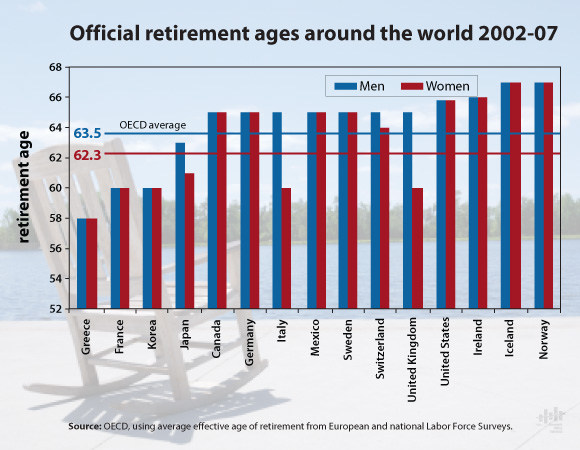By Andrea Orr
At a time when some policy makers are recommending increasing the retirement age to 70, it is worth noting that American workers already have a higher retirement age than most of the rest of the developed world. The Figure shows the official retirement ages – the age at which workers may collect full retirement benefits – for men and women in the United States and several other countries in the Organization of Economic Cooperation and Development (OECD) as of 2007. The official U.S. retirement age, which was 65.8 years at the time, was significantly higher than the OECD averages of 63.5 years for men and 62.3 years for women. (U.S. workers may also take early retirement at age 62 and collect reduced benefits).

Twenty-six of the 30 OECD countries have official retirement ages of 65 or younger. Only Ireland, with an official retirement age of 66, and Iceland and Norway, at 67, ranked slightly above the U.S. at the time these data were collected. However, the U.S. retirement age is gradually increasing. It is currently 66 for most workers entering retirement (those born between 1943 and 1954), and it will rise to 67 for those born in 1960 or later. Those increases put the U.S. retirement age at the very high end of the scale: A further increase to 70 would put it well beyond the age that workers in the rest of the developed world can currently retire and collect full benefits. At the same time, the life expectancy for retired American workers is about the same as that in most other developed countries.
In her 2009 paper Working the Graveyard Shift, EPI Economist Monique Morrissey notes that most of the increase in life expectancy in the U.S. in recent decades has been among higher income workers. Raising the retirement age would hurt many workers who have little choice but to retire early due to poor health and job prospects – often the low-income workers who rely on Social Security the most.
